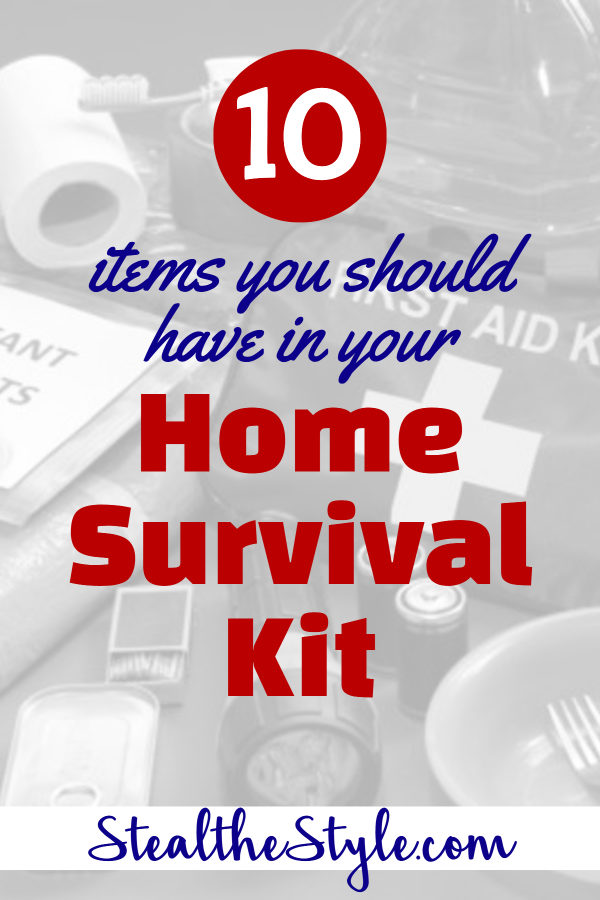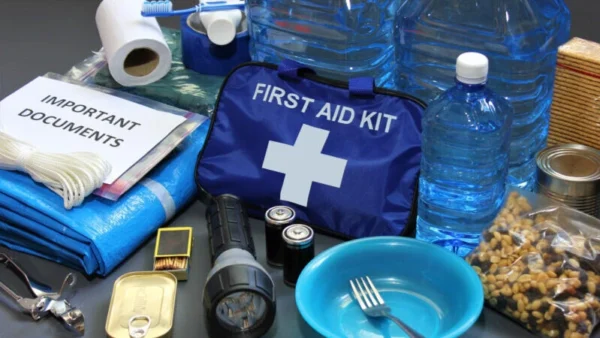Disclosure: This post may contain affiliate links, meaning we get a commission if you decide to make a purchase through our links, at no cost to you. Please read our disclosure for more info.
Last Updated on May 31, 2024 by Steal the Style
Only about 17% of the American population believes they are adequately prepared for a national emergency.
So, what happens when an emergency strikes and you’re unable to head to the store, or the store is low on the necessary supplies?
Every home should have a home survival kit in case the word occurs. But where do you start when compiling a survival kit, and what can you exclude?
If you realize that you need to be prepared for disaster, keep reading to understand more about emergency preparedness.
In This Post:
Home Survival Kit: What You Need to Know
You never know when an emergency will happen. Being prepared is the best we can do to keep everyone safe and well.
It’s important to know a few things about putting together a survival kit.
When you start planning your kit, plan for all the members of your family. Each kit will look different because the family’s needs differ.
Most of the items in your kit are will be inexpensive and easily found in stores. You can stock your kit with items that can last anywhere from at least three days or more. It’s entirely up to you.
The items you pack are considered for emergencies only and should be under no condition opened unless a disaster occurs.
Keep your kit located in your home, place of work, or your car. Emergencies can happen outside of your home, too, so it’s wise to keep it in multiple locations. Be sure it’s someplace dry and has a small chance of being destroyed, and keep other items in a secure box.
Continually check your kit for expired dates and replace them as necessary. Also, add items if your family grows.
10 Emergency Kit Essentials
There are so many things you think you might need in an emergency, but only the essentials are needed. If you’re confused about what you should and should not include, check out this list below.
1. Water
Water is one of the number one items you need to have in your kit. If you’re stranded somewhere for several days, water is key to survival, especially if there’s a water shortage.
Generally speaking, you will need about three gallons of water, per person, per day.
Water-filter straws are available if you end up being without access to clean water. Water-filer straws can remove 99% of toxins, impurities, and bacteria so you can stay hydrated if you find yourself without filtered water.
2. Battery Flash Light
Being left in the dark is scary, especially if you’re left stranded. Many smartphones nowadays have flashlights integrated into them, but in emergencies, they may not be reliable. Keeping a battery-powered flashlight will help you find your way around if you need to, but check the batteries frequently to make sure they’re still working.
3. Emergency Phone Numbers
Having a list of phone numbers of doctors, family members, and other numbers is important in case you cannot get to a medical professional. Write them on a piece of paper that’s laminated so it doesn’t become destroyed.
4. First-Aid Kit
A first-aid kit is a critical part of your emergency kit. You can purchase an already-assembled kit that comes with bandaids, pain medications, medical supplies, and more. If you’d like to piece together your kit because of personal reasons, make sure it’s enclosed in a secure container.
5. Medications
If you take any kind of medications, keep an updated supply in your kit, or subscribe to an online pharmacy so you can receive a 90-day supply. Medications are essential, especially if you take them daily and you have a life-threatening condition.
6. Battery-Powered Radio
Even in our world of wireless technology, we don’t consider using equipment that uses batteries. However, in the chance of a national disaster, it’s quite possible that internet access could be limited. In that case, it’s wise to have a battery-powered radio and even walkie talkies, so you can communicate with people and stay up-to-date on events.
Be sure to check your battery power and even keep spare batteries in your kit as well. Cell phone chargers are important to add.
7. Food
Next to water, to survive, you’ll need food! Canned foods or non-perishable foods are the best choices, and you’ll need at least a 3-day supply for each family member. Check the expiration date periodically to make sure nothing goes bad.
You can also purchase food kits that are prepackaged instead of putting together your kit.
8. Supplies For Children
If you have small children or children in diapers, consider adding diapers and wipes to your emergency kit. You can always remove them as your children age and no longer need wipes.
Wet wipes and even sanitation wipes are still great additions to your kit because children (and adults!) can become messy very quickly! Add trash bags to collect trash.
9. Pet Supplies
Don’t forget your furry friends! If you have pets in your family, they will need to stay well also. Consider keeping extra water and pet food in your supply kit so your pooch is taken care of.
10. Thermal Blankets
You might not think blankets are needed, but if your power goes out and there’s no heat, everyone could become chilly very quickly, which could lead to health problems. Make sure everyone stays comfortable by packing your kit with thermal blankets that are designed to keep heat contained and avoid hypothermia.
Stay Prepared
A home survival kit could be a life-saver in the event of an emergency. How can you start building yours today?
Are you looking for more information on how to stay healthy? Our page has everything you need! Check it out today!






